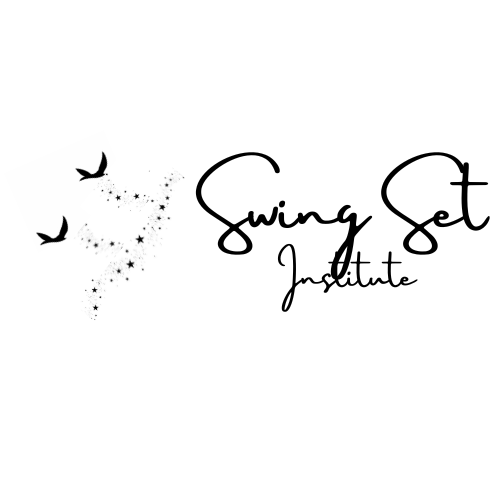
What does it mean to be a Childhood Changemaker™?
Childhood Changemaking illuminates the need for education changemakers to heal from their own childhood and integrate the wise qualities of childhood; play, creativity, curiosity, risk-taking, resilience, and collaboration – the qualities of transformative changemakers.
Childhood Changemaking means bringing a fresh approach to changemaking that is inspired by the wisdom of childhood with (1) playful integrity, (2) a deep commitment to REALationships, and (3) and an imaginative approach to change.
Playful Integrity
Balancing the playful and the serious while linking inner and outer change.
- Befriending ourselves with love, humor, and self-compassion to center mental health and self-love throughout the journey.
- Confronting the “Changemaker Paradox” with a critical and playful reflection on the link between our public and private changemaking
- Reflecting on how our relationships with children and childhood mirror the social issues of the world
- Taking naps and doing the dishes as needed
REALationships
Changemaking as Relationship
- Seeing relationships (everyday moments, conversations, embodiment) as the fulcrum of change
- Mindset of all as one family where there is no “other”
- Commitment to refining the truths we tell each other and to ourselves
- Appreciation for our interconnected and interdependent nature
- Strategic relational shift framing social issues connecting the economic to the ecological
Imagination
Reimagining what’s possible
- Re-connecting with our boundless capacity in childhood to imagine, vision, and dream
- Harnessing the power of the mind and the heart in imagining a world transformed by the possibilities of love
- Re-inspiring our imagination in our everyday moments
- Unleashing our creative potential and ways of expression, healing, and connection
- Illuminating our capacity for authentic empowerment in making our changemaker dreams come to fruition
The Childhood Changemaker path illuminates the following ‘playground’ principles:
Slide | See Saw | Sand Box | Merry-Go-Round | Swing Set
Principle #1 | SLIDE
Begin at the Beginning – Inspired by the Wisdom of Childhood
Seeing The Roots of Education Change Clearly
The path for education changemakers begins back at the beginning – healing and reclaiming our power from childhood to transform disempowering experiences into our superpowers so we can connect and lead from our wholeness.
Disempowerment is a common human experience from universal experiences of powerlessness in childhood from our societies ‘power over’ dynamics of control over children called adultism. Our greatest social issues – climate crisis, racism, sexism – all have their roots in the way adults treat children. It is known that the nature of oppression is non-hierarchical and intersectional but oppression is also foundational, in childhood. Since the oppression of children is the earliest, most normalized, and rationalized form of oppression; it provides the foundation for all other forms of oppression because the first relationships in childhood root initial experiences with the common elements of all oppression.
Principle #2 | See Saw
Teach Who You Are
Seeing Ourselves Clearly
We begin the healing and transformation process as education changemakers with a deepening of awareness that refines the truths we tell ourselves and how we relate to our own childhood experiences now as adults. This involves re-connecting to our authentic self and deep personal “why” in commitment to the journey of education changemaking. Our authenticity is found in reconnecting more deeply with ourselves and our “inner child” with an intention of integration. Playful integrity involves taking accountability for our changemaker path without striving for perfection and being kind and compassionate to ourselves along the way centering mental health and self-love.
Principle #3 | Sand Box
I am Me because of We and We needs Me
Seeing our Interdependent Nature Clearly
We then are able to see more clearly our larger connection through the common humanity experience of childhood. The earliest experience of being in the womb is a lived experience of the profound interconnection and interdependence of human nature. This is important to remember in pursuits of solidarity and partnership in changemaking. It is our true nature. It is our original sense of inter-being that acknowledges that all of our liberation is bound together. It also acknowledges that ‘it takes a village’ to unconditionally love a child up and to heal as education changemakers.
Principle #4 | Merry-Go-Round
Connecting Moments to Movements and Movements to Moments
Seeing Changemaking Clearly
Seeing changemaking clearly involves seeing love as both the goal and the process and “seeing the goal in the process.” We can see changemaking as a lifestyle by connecting our everyday moments to movements, seeing change as relational and interconnected between the public and the private, the inner and the outer, and the personal and the planetary.
Principle #5 – Swing Set
Liberate Your Imagination
Seeing What’s Possible Clearly
Linking childhood and changemaking involves being playful with our imagination towards changemaking to reimagine what is possible. It also means that the changemaking journey can be joyful, fun, presencing, and renewing. It involves taking the risk to dream BIG and letting our imagination go wild to expand the possibilities of what is possible. To liberate our imagination we can integrate the wise qualities of childhood – play, creativity, curiosity, risk-taking, resilience, and collaboration – into our changemaking.
